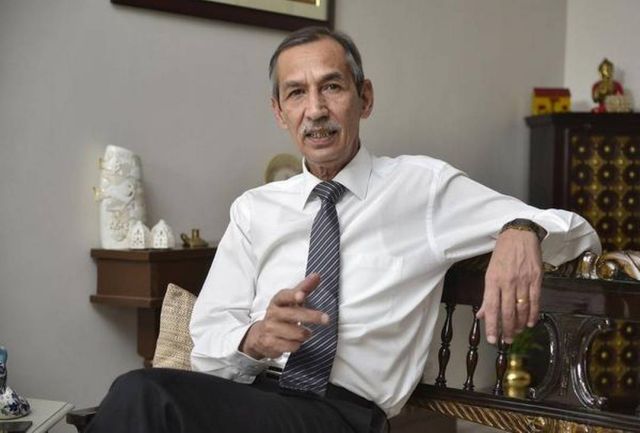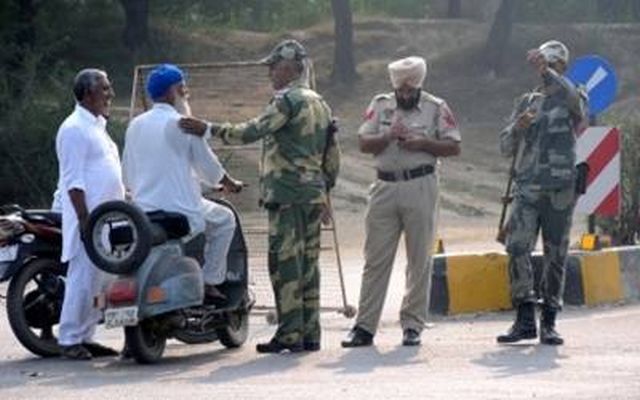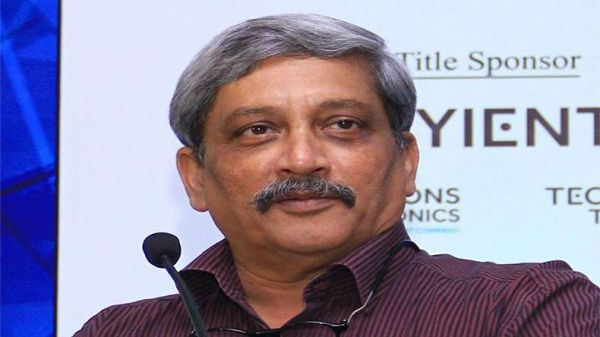
by admin | May 25, 2021 | Interviews

Lt. General (retd) Deependra Singh Hooda
By Mohd Asim Khan,
New Delhi : The Indian side was prepared for escalation — in case Pakistan chose to do so — while conceiving and executing the 2016 surgical strikes by crossing the Line of Control (LoC) along the Jammu and Kashmir border, according to the army general who oversaw the strikes.
“We had sort of war-gamed all the contingencies of what could be the impact of the surgical strike. And one of the things that we did consider was that in case Pakistan decides to escalate, then what do we have to do,” Lt. General (retd) Deependra Singh Hooda, who planned and oversaw the execution of the operation as the General Officer Commanding (GoC) of the Northern Command, told IANS in an interview.
“And we had put plans in place of what is to be done in various areas. I can’t go into details, but definitely it was something that we considered,” he added.
On the intervening night of September 28-29, 2016 — 11 days after the Uri attack by militants from across the border — a group of Indian Army commandos crossed the LoC and in a pre-emptive strike destroyed several launch pads of militants in Pakistan-administered Kashmir. The Army estimated that 30-70 militants and their handlers were killed in the strike The highly-decorated officer retired from the Army on November 30th, the same year.
Hooda also said they knew there would only be a “limited” kind of response from Pakistan side, if at all.
“I was clear in my mind that the surgical strike was not going to lead to something like an all-out war between the two countries. That wouldn’t have happened because Pakistan military’s capabilities in that sense are limited. So I am not sure they would have decided to escalate to that extent,” Hooda said.
“But, yes, some local border incidents, in a kind of escalation, was something that we had in our mind,” he added.
Hooda said that this was not the first time that such a cross-LoC operation was done — in fact such things go on a “fairly regular basis” in a limited manner — but the surgical strike of 2016 was different from earlier similar operations primarily in two ways.
“Similar operations had been done in the past on multiple occasions. It’s been happening for years. It’s not as if it was for the first time. The difference was that this time around the scale was larger, and more importantly, the government decided to own up and say yes we did it. Whatever had been done in the past was never officially accepted,” Hooda said.
He said that it was a “very high risk” operation and he was worried about what would happen if something went wrong — like a soldier being captured — or how to evacuate a soldier if he was injured or killed.
“The exfiltration after the operation was actually a more risky task. But again, we had planned the contingencies. We had prepared to send more people across to get our boys out,” he said.
He said that Pakistan kept saying the surgical strike had not happened, but in fact there was considerable panic on the Pakistani side.
“We were listening to their radio conversation after the strikes and there was a fair amount of panic on the other side. They cancelled their leaves, more high alerts were sounded, and they kept telling each other to be careful as ‘these guys may come across again’. There was psychological pressure on the Pakistanis,” Hooda said.
After the operation, Hooda said, the morale of India soldiers went “sky high”.
“You could have seen it in their faces. The fact that they had gone across the border, done the operation and came back successfully without anybody getting injured was a great feeling. It was a complex operation. There was a huge confidence that we can do it again, which is a big thing because if you have a failure, then there is always a doubt in your mind whether we should attempt something like this again,” Hooda said.
The general, however, admitted that infiltration had neither stopped, nor had come down, after the surgical strikes. Instead, it appeared to have slightly gone up.
“They kept trying. And I believe there was a feeling that this has been done to us, we should try and do something back. Now, they can’t do it conventionally because their army cannot do it. So they kept sending infiltrators,” he said.
“Thousands and thousands of them (militants) are there. The Pakistani army thinks these are expendable chaps, toh inhe bhejte raho (keep pushing them across the border),” he added.
How does he feel when people raise questions on the veracity of army action or use of words like farcical strikes?
“Well, it’s a bit disappointing. People should have no doubt when an army officer of the rank of DGMO (Director General Military Operations) comes in front of the camera on live TV and announces that this has been done. Officials at that level cannot give irresponsible statements,” Hooda said.
(Asim Khan can be contacted on mohd.a@ians.in )
—IANS

by admin | May 25, 2021 | News, Politics
 New Delhi : The Congress on Thursday accused the Modi government of using the 2016 surgical strike carried out in Pakistan as “political fodder” to gain votes and listed many similar strikes done in the last two decades to assert this was not the first action of its kind.
New Delhi : The Congress on Thursday accused the Modi government of using the 2016 surgical strike carried out in Pakistan as “political fodder” to gain votes and listed many similar strikes done in the last two decades to assert this was not the first action of its kind.
Congress leader Randeep Singh Surjewala’s comments came a day after the release of the video footage of the Indian Army’s surgical strikes in September 2016 when troops crossed the Line of Control (LoC) to attack terror hubs in Pakistan-administered Kashmir.
Surjewala told reporters that BJP President Amit Shah had “dishonoured” the 70-year-long history of bravery and sacrifice of the armed forces by making a “disgraceful statement” on October 7, 2016 that the “Indian Army had crossed the LoC for the first time in 68 years”.
Stressing that Congress President Rahul Gandhi and her predecessor Sonia Gandhi supported the armed forces and the government in the 2016 action, Surjewala said the Army had conducted strategic surgical strikes “with utmost precision and effective penetration” at different times in the last two decades.
He listed eight “surgical strikes” conducted prior to 2016.
“We are proud that our forces successfully conducted multiple surgical strikes over the last two decades, particularly post 2000 — January 21, 2000 (Nadala Enclave, across Neelam river); September 18, 2003 (Baroh Sector, Poonch); June 19, 2008 (Bhattal Sector, Poonch); August 30 to September 1, 2011 (Sharda Sector, across Neelam river Valley in Kel); January 6, 2013 (Sawan Patra Checkpost); July 27 to 28, 2013 (Nazapir Sector); August 6, 2013 (Neelam Valley); January 14, 2014; September 28 to 29, 2016.”
He said the Modi government sought credit for the sacrifices of the soldiers but had “utterly failed” to provide the direction, vision and policy for dealing with Pakistan and checkmating Pakistan-sponsored terrorism.
“No wonder the apathy and incapacity of the Modi government has resulted in the sacrifice of 146 soldiers, more than 1,600 ceasefire violations by Pakistan and 79 terrorist attacks post September 2016,” Surjewala said.
“Doublespeak of the Modi government and the BJP’s stand is reflected in the stepmotherly treatment of our armed forces, both in terms of providing for security apparatus as also in slashing their budgetary allocation.”
Surjewala alleged that Army Vice Chief Sarath Chand was “forced” to say that 68 per cent of all equipment was vintage.
“On account of budgetary cuts, procurement from ordinance factory is being reduced from 94 per cent to 50 per cent, which will force our soldiers to buy uniforms, combat dress, belts and shoes on their own.”
Surjewala said the report of the Parliamentary Committee on Defence highlighted lack of money for emergency purchases by Armed Forces after the Uri terror attack, the surgical strike and the Doklam standoff with China.
—IANS

by admin | May 25, 2021 | Corporate, Corporate Governance, News, Politics
 By Mayabhushan Nagvenkar,
By Mayabhushan Nagvenkar,
Panaji : Until some months ago, as Raksha Mantri, Manohar Parrikar, with his trademark fidgety eloquence, could explain the flaws in the LCA Tejas or confidently hold fort on the now-fabled surgical strikes against Pakistan.
However, Parrikar appears to have re-adapted to his role as Chief Minister of India’s smallest state, Goa, and in the course of his relatively subdued campaign for the August 23 Panaji by-polls, rising tomato prices appear to have replaced his discourse on the Tejas indigenous light combat aircraft (LCA).
And in place of the gung-ho surgical strikes’ narrative, the four-time Chief Minister now readily offers tips from his own experience to women’s self-help groups on how to hammer papad dough into soft patties to further their business.
Contesting a by-poll necessitated by his hasty return to state politics in March and subsequent resignation of Panaji BJP MLA Sidhath Kuncolienkar, Parrikar, a five-term Panaji MLA, is anxiously reaching out to his constituents in the state capital, whom he was forced to leave mid-way, when he was elevated as Defence Minister in the Prime Minister Narendra Modi-led cabinet in November 2014.
Earlier this week, after completing more than 100 informal meetings with voters in the homes and parks of residential colonies, Parrikar was in his rustic element, as he addressed a group of women voters, several of whom run self-help groups.
And, as is Parrikar’s won’t, he offered a quick solution to the cash crunch faced by housewives, when faced with inflation, especially the rising prices of tomatoes.
Parrikar first explained why the prices of tomatoes shoot up in the monsoon, saying the fleshy essential vegetable rots easily and because the state does not produce the crop, importing tomatoes invariably means a bigger cost.
But he offered the fifty-odd visibly impressed audience a simple solution to beat tomato prices, which after scaling a high of Rs 100 per kg, have now stablised at Rs 45.
“In reality there is a simple way (to avoid tomatoes). On a day that you do not have tomatoes at home, use more onions,” Parrikar said.
The Indian Institute of Technology-Bombay alumnus further explained that no matter how much inflation shoots, the eventual setback to a household’s budget is in the range of Rs 200 to Rs 250.
“When I say tomatoes, no one buys 10 kg of tomatoes for consumption. For household use, people normally buy one kg, half a kg or 400 gm, depending on the size of the family,” Parrikar said.
“People buy more onions. From two kg to five kg. Again that depends on the (size of the) family. Today’s families can utilise two kg onions for almost a month. Why am I saying this? When I calculated all details of inflation, I realised that, however much inflation rises, the difference (to the household’s budget) is Rs 200 to Rs 250,” he said, adding that his government had, in the past, offered schemes like the Griha Adhar Yojana to housewives and more such measures could be on the anvil in the future.
Parrikar, who did his bachelors in metallurgical engineering, also dipped into his childhood to explain to representatives of women’s self-help groups at the BJP state party office on Wednesday about the significance of kneading the perfect dough to manufacture quality papads, which he said are a good financial incentive for small collectives.
“I am telling you papad-making is in demand. You don’t have to roll a papad nowadays. All that matters is your skill at hammering (the dough) and adding the right amount of spices. That is all you need to know, the rest of the work can be done by the machine. When I was small, I also hammered dough,” Parrikar said.
Another business idea Parrikar offered the self-help groups was making of “dronns”.
No, he wasn’t referring to the hi-tech, armed, unmanned aerial vehicles he had lined up to procure during his August 2016 visit to the US as Defence Minister, but to cups made of compacted, dry leaves referred to as dronns in Konkani, Goa’s native tongue.
“Simple dronns are in demand. All you need to do is press them on a machine,” Parrikar said.
(Mayabhushan Nagvenkar can be contacted at mayabhushan.n@ians.in)
—IANS



